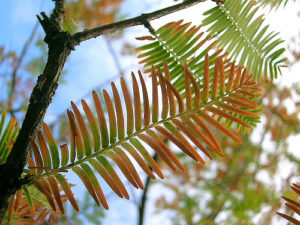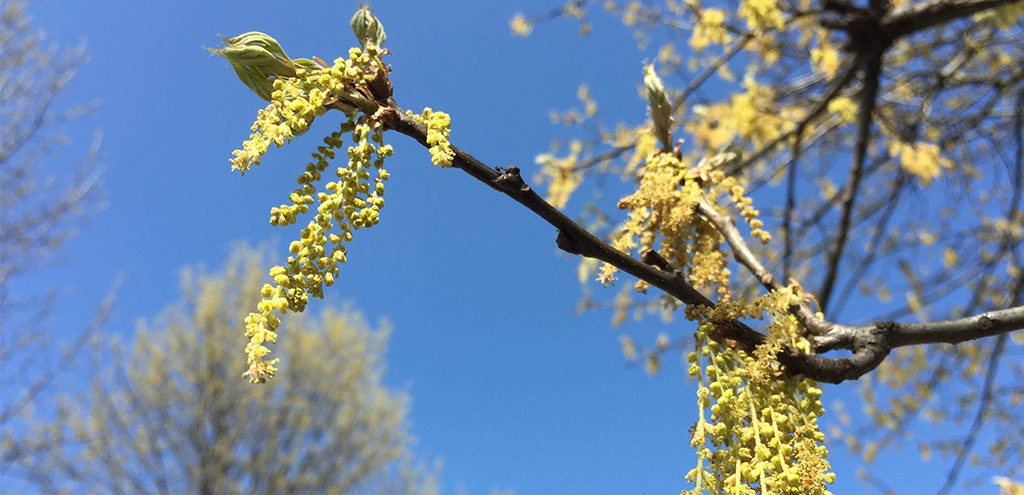
The catkins are piling up — those pendulous clusters of tiny flowers covered in pollen. And they’re on sidewalks, cars, and everywhere else. Believe it or not, tree pollen maxed out at 2,828 grains per cubic meter last Wednesday. Thankfully, the abundance of catkins signals the coming end of the constant pollen.
In oak trees, which have been our main source of tree pollen over the past couple of weeks, catkins are the male reproductive organ. The catkins shed pollen through the wind, and, ideally, that pollen fertilizes the female flowers. When the catkins are spent, they drop to the ground.
Late February brought an unusual early-season tree pollen spike, thanks to record-breaking 80-degree weather, but then levels tanked in March. But the sudden onset of warm, breezy weather in the 70s and 80s unleashed an onslaught of pollen. The biggest culprits? Oak, pine, sycamore, ash, mulberry, birch and sweet gum trees (among numerous other species).
Want to add some color and shade to your yard without the suffering of allergies? You have options! While no tree is completely pollen free, here are some sneeze free options:
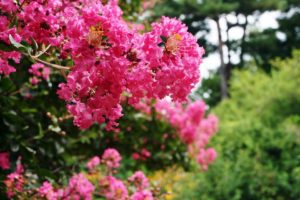
Crape Myrtle
A small, flowering tree that will provide shade when fully-grown, the crape myrtle not only has wonderful, showy flowers that can range from white to deep purple, it also has smooth, ornate bark that peels as the tree gets older. Many varieties were developed right here in D.C. at the U.S. National Arboretum – where many crape myrtles may be found. Plant your own and send in a form for a rebate!
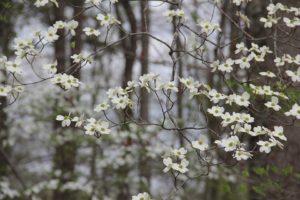 Flowering Dogwood
Flowering Dogwood
With showy, fragrant, white flowers, the flowering dogwood is a small tree found in gardens and yards throughout the D.C. area. Its red berries are prized by wildlife and its flowers attract pollinators such as bees and butterflies. If stressed, dogwoods are susceptible to diseases – the most common is powdery mildew of the leaves – unsightly but not life-threatening for the tree. This tree is available through our residential planting program, RiverSmart Homes. You can also get up to $50 back for planting this tree yourself through our tree rebate program.
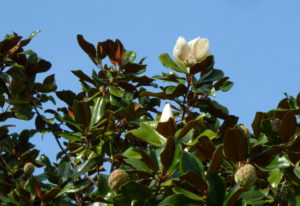
Southern Magnolia
This elegant tree has large fragrant flowers that bloom from March to June, striking seed pods that drop bright red seeds in the fall, and bold, beautiful leaves. Southern magnolias are a much sought-after, durable evergreen tree that grace gardens and yards throughout the District. Better yet? They can grow up to 50 feet in 50 years and provide ample shade, making them eligible for our residential planting program, RiverSmart Homes, and worth $100 back for planting this tree yourself through our tree rebate program.
The dawn redwood is prehistoric by any measure – thought to be extinct until discovered in a small portion of China in the 1940s. Smaller than its cousin in California, the dawn redwood is a stately, pyramid-shaped tree that loses its needles in the fall – thus earning its designation as a “deciduous conifer.” As they can grow up to 40-50 feet in 50 years, dawn redwoods are eligible for our tree rebate program.
Hawthorns are well suited for city life as they’re a tough species, able to deal with a range of soil conditions and drought, but they tolerate only moderate shade. What makes them really tough though? The long, stout thorns and twisting and turning branches that form thickets on the most natural specimens. Fear not though, many cultivars have been selected to be thornless and columnar with showy flowers and fruit. Plus (you guessed it) you can plant your own and send in a form for a rebate!
While trees produce the biggest spike in pollen, unfortunately, grass pollen tends to ramp up as trees are winding down — from late spring to early summer. Don’t put the tissues away just yet.
